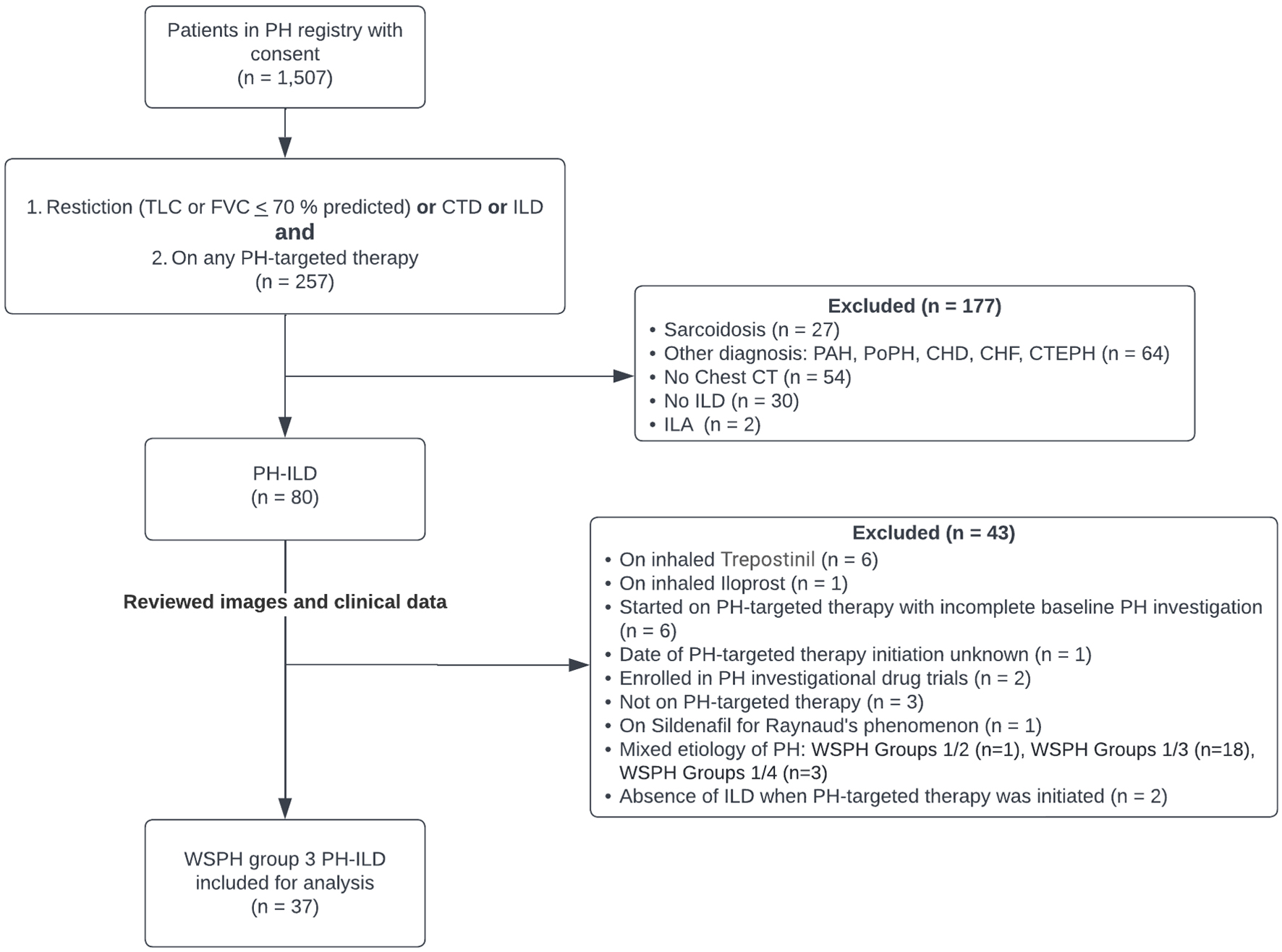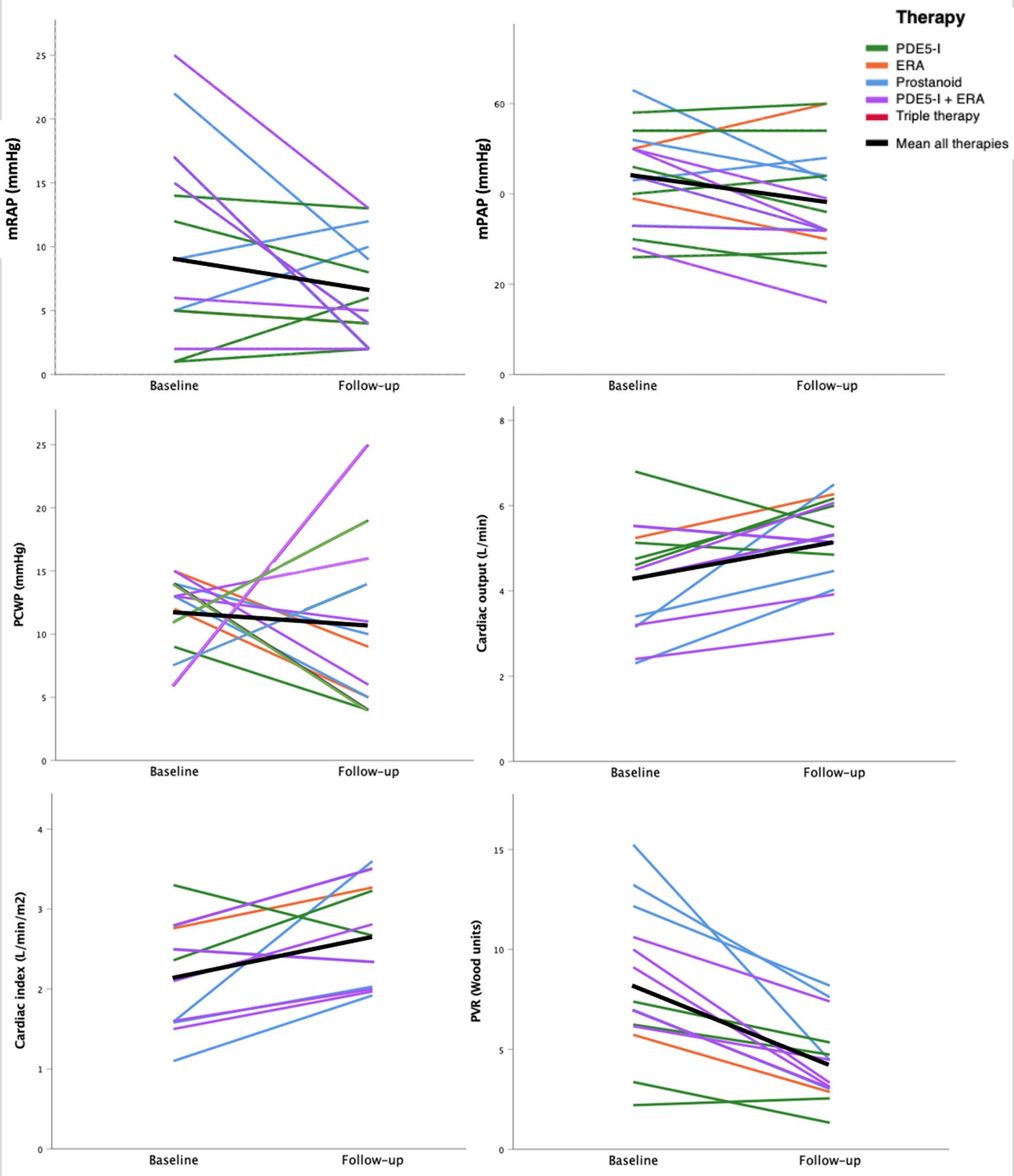| Age (years) | 60.22 ± 10.54 |
| Female | 29 (78.4) |
| BMI (kg/m2) | 28.98 ± 6.87 |
| Race | |
| African-American | 20 (54.1) |
| Caucasian | 15 (40.5) |
| Asian | 1 (2.7) |
| Hispanic | 1 (2.7) |
| Subtype of ILD | |
| Connective tissue disease associated-ILD | 27 (73.0) |
| Idiopathic pulmonary fibrosis | 4 (10.8) |
| Hypersensitivity pneumonitis | 2 (5.4) |
| Unclassifiable | 2 (5.4) |
| Idiopathic NSIP | 1 (2.7) |
| Smoking-related ILD | 1 (2.7) |
| Imaging pattern | |
| Definite/probable UIP | 17 (45.9) |
| NSIP | 14 (37.8) |
| Othera | 6 (16.2) |
| Pulmonary function test | |
| TLC (% predicted) | 68.9 ± 20.2 |
| FVC (% predicted) | 59.9 ± 15.7 |
| FEV1 (% predicted) | 63 ± 16.2 |
| DLCO (% predicted) | 34.5 ± 15.3 |
| Comorbidities | |
| Connective tissue disease | 27 (73.0) |
| Systemic sclerosis | 11 (29.7) |
| Mixed connective tissue disease | 4 (10.8) |
| Rheumatoid arthritis | 4 (10.8) |
| Polymyositis/dermatomyositis | 3 (8.1) |
| SLE/SLE overlap syndrome | 2 (5.4) |
| Undifferentiated connective tissue disease | 2 (5.4) |
| Sjogren’s syndrome | 1 (2.7) |
| Hypertension | 19 (51.4) |
| Obesity (BMI ≥ 30 kg/m2) | 15 (40.5) |
| Heart failure with preserved ejection fraction | 12 (32.4) |
| Chronic obstructive pulmonary diseaseb | 7 (18.9) |
| Obstructive sleep apnea | 7 (18.9) |
| Atrial fibrillation | 7 (18.9) |
| Diabetes mellites | 7 (18.9) |
| Venous thromboembolism | 6 (16.2) |
| Chronic kidney disease | 5(13.5) |
| Heart failure with reduced ejection fraction | 2 (5.4) |
| Medications | |
| Diuretics | 25 (67.6) |
| Aspirin | 12 (32.4) |
| Beta-blockers | 11 (29.7) |
| ACEIs/ARBs | 8 (21.6) |
| Calcium channel blockers | |
| Dihydropyridines | 10 (27.0) |
| Non-dihydropyridines | 4 (10.8) |
| Warfarin/DOACs | 7 (18.9) |
| Labs (n = 30) | |
| NT-proBNP (pg/mL) | 1,498 (675 - 3,208) |
| Pulmonary hemodynamics (n = 33) | |
| mRAP (mm Hg) | 9.4 ± 4.2 |
| mPAP (mm Hg) | 44.5 ± 10.5 |
| PCWP (mm Hg) | 12.0 ± 3.3 |
| Cardiac output (L/min) | 3.8 ± 1.1 |
| Cardiac index (L/min/m2) | 2.1 ± 0.6 |
| PVR (Wood units) | 8.9 ± 4.0 |
| 6-min walk test or treadmill | |
| Walk time (s), n = 7 | 335.8 ± 119.7 |
| Walk distance (m), n = 10 | 233.4 ± 87.0 |
| METs, n = 6 | 5.10 ± 1.05 |
| WHO functional class (n = 31) | |
| II | 6 (19.4) |
| III | 21 (67.7) |
| IV | 4 (12.9) |


